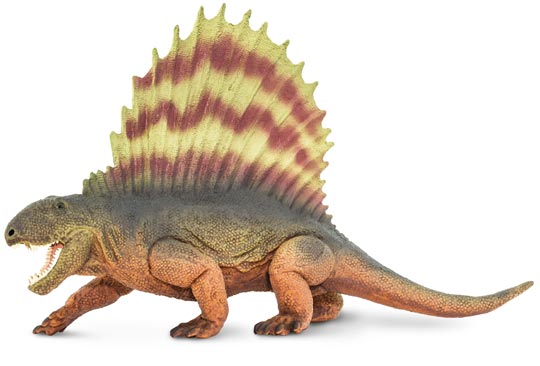Rare Fossil Bone Identified and a Decades-long Mystery is Solved
Scientists have solved a five-decade-old mystery. A strange bone found in 1974 has been identified as part of the pelvis from a Dimetrodon (D. teutonis). In 1974, geologist Thomas Martens discovered a fossil bone whilst exploring the famous Bromacker fossil site in the Thuringian Forest near the village of Tambach-Dietharz (Germany). This site consists of Permian-aged deposits that have yielded a treasure trove of fossils. The Bromacker location is regarded as one of the world’s most important locations for fossils of Early Permian animals. It is part of the UNESCO Geopark in the region, and the Lower Permian rocks have been extensively explored and mapped.

An aerial view of the famous Bromacker fossil site in Germany. Picture credit: Jakob Stubenrauch Team Drohne.
Picture credit: Jakob Stubenrauch Team Drohne
Fossil Mystery Solved at Bromacker Fossil Site
Prior to the fossil bone discovery, tracks of tetrapods had been found at the Bromacker site. However, fossil bones were rare. It had been thought that preservation conditions had prevented body fossils from being formed. However, the discovery of pelvic girdle bones demonstrated that this site could yield body fossils. As part of the current research project, the bones were digitally analysed and reconstructed by researchers at the Museum für Naturkunde Berlin.
The non-destructive CT scans and digital modelling enabled the scientists to produce three-dimensional models of the material.
Project manager Professor Jörg Fröbisch (Museum für Naturkunde Berlin) commented:
“I was particularly fascinated by the first bone find right from the start. With the help of modern and CT-based 3D methods, we were able to isolate the bone, visualise it from all sides and compare it with other finds. The scales fell from our eyes, and we immediately realised that it was the pelvis of a synapsid most likely that of Dimetrodon, a distant relative of us mammals.”
The picture (above) shows a Dimetrodon model. The Dimetrodon taxon associated with the Bromacker fossil site is Dimetrodon teutonis. The model shown is from the Wild Safari Prehistoric World series of figures.
To view this range on Everything Dinosaur’s website: Wild Safari Prehistoric World Models.
Dimetrodon teutonis
Dimetrodon teutonis was probably one of the top predators in the Bromacker palaeoenvironment. It was named and described in 2001 (Berman et al). The type specimen is MNG 10598, which consists of a set of vertebrae including elements from the distinctive sail of the Dimetrodon genus. The Bromacker fossil material represents the first record of Dimetrodon outside of North America. Dimetrodon teutonis was one of the smaller species of Dimetrodon. Scientists have estimated that it measured around a metre in length and weighed approximately twenty-five kilograms.
The species epithet is from the Latin “teutonis”. This translates as an individual of a German tribe. This is a reference to the geographic origins of the fossil material. It remains the only species of Dimetrodon known from the Bromacker fossil site. To date, only an isolated upper jaw, skeletal parts of a dorsal sail, a shoulder girdle and limb elements have been found at the Bromacker location. The discovery of the pelvic girdle of D. teutonis will help scientists to better understand the animal’s locomotion.
Everything Dinosaur acknowledges the assistance of a media release from the Museum für Naturkunde Berlin in the compilation of this article.
The award-winning Everything Dinosaur website: Dinosaur Toys and Models.


